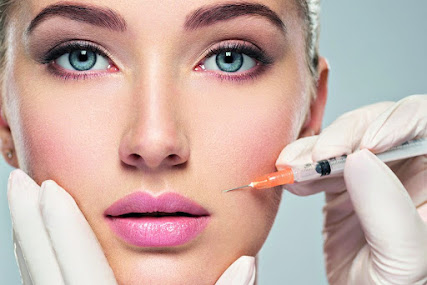Difference Between Botox and Fillers?

Botox and fillers:
Popular non-surgical cosmetic treatments. Both aim to enhance the facial appearance and reduce signs of aging. This article provides a comprehensive comparison between Botox and fillers, helping you make an informed decision based on your unique needs
Botox: Derived from botulinum toxin type A
Targets dynamic kinks brought about by dull facial developments
Briefly loosens up muscles, lessening the presence of kinks
Botox: Derived from botulinum toxin type A
Targets dynamic kinks brought about by dull facial developments
Briefly loosens up muscles, lessening the presence of kinks
Advantages of Botox:
- Reduction of dynamic wrinkles:Frown lines, crow's feet, and forehead wrinkles are effectively treated
- Temporarily inhibits muscle movement, minimizing wrinkle formation
- Quick and minimally invasive procedure:Treatment time typically ranges from 10 to 30 minutes
- Little to no downtime, allowing for immediate return to daily activities
- Longevity of results:Botox effects typically last 3 to 6 months
- Regular treatments can help maintain desired results
- Additional therapeutic applications:Botox is used to treat medical conditions like chronic migraines, hyperhidrosis, and muscle spasms
- Provides relief and improves quality of life for patients
Fillers:
- Made of various substances, such as hyaluronic acid (HA) or calcium hydroxylapatite
- Address volume loss, static wrinkles, and facial contouring
Advantages of Fillers:
- Restoring volume and smoothing static wrinkles: Fills in areas with volume loss, such as cheeks, temples, and lips
- Softens deep lines and folds, such as nasolabial folds and marionette lines
- Enhancing facial features: Can be used for non-surgical rhinoplasty, chin augmentation, and jawline definition
Improves facial symmetry and proportions
Immediate and long-lasting results: Noticeable results immediately after treatmentDuration varies depending on the type of filler used (6 months to 2 years)
Reversible and customizable: Adjustments can be made during the treatment session for optimal results
If desired, the effects of fillers can be reversed using an enzyme called hyaluronidase
The Differences:
- Treatment areas: Botox primarily targets dynamic wrinkles in the upper face
- Fillers address volume loss and static wrinkles in various facial areas
- Mechanism of action: Botox temporarily relaxes muscles by blocking nerve signals
- Fillers add volume and stimulate collagen production for a more youthful appearance
- Duration of results: Botox effects typically last 3 to 6 months
- Fillers can last between 6 months and 2 years, depending on the type used
- Complementary use :Botox and fillers can be used together to achieve comprehensive facial rejuvenation
- Each treatment targets different aspects of facial aging
Choosing the Right Treatment:
- Dynamic wrinkles: Botox is the preferred treatment for frown lines, crow's feet, and forehead wrinkles caused by repetitive muscle movements
- Volume loss and static wrinkles: Fillers are ideal for restoring volume in areas such as cheeks, temples, and chin
- They also effectively smooth out deep lines and folds on the face
- Customized treatment plan: Consultation with a qualified practitioner is crucial
- A comprehensive evaluation of your facial anatomy and goals will help determine the appropriate treatment or combination
- Budget considerations: Botox and fillers have different price points based on the amount required and the longevity of results
Potential Side Effects and Risks:
- Botox: Temporary side effects include redness, swelling, bruising, or mild headaches
- Fillers: Common side effects include temporary redness, swelling, bruising, or tenderness at the injection sites
Choosing a Qualified Practitioner:
- Research and credentials: Seek a licensed professional with experience in administering Botox and fillers
- Reviews and recommendations: Read testimonials and reviews from previous patients
- Consultation and communication: Schedule initial consultations with different practitioners
- Transparency and professionalism: Inquire about the brand and type of products used
- Discuss potential risks, benefits, and expected results
- Ensure a comprehensive understanding of the procedure and aftercare instructions
Conclusion:
- Botox and fillers are valuable tools in the field of non-surgical cosmetic treatments, addressing different aspects of facial aging.
- Botox is ideal for dynamic wrinkles, while fillers excel in restoring volume and smoothing static wrinkles.
- Consultation with a qualified practitioner is essential to determine the most suitable treatment or combination for your unique needs.
- Embrace the possibilities of Botox and fillers, and unlock a more youthful, refreshed version of yourself!
https://dogscatlover.blogspot.com/2024/01/a-guide-to-mans-best-friend-dog.html
https://dogscatlover.blogspot.com/2024/01/unveiling-heart-of-american-pit-bull.html
https://dogscatlover.blogspot.com/2024/01/maine-coon-cat-history-breeding-size.html
https://dogscatlover.blogspot.com/2024/01/the-beginners-guide-to-first-time-cat.htm
https://dogscatlover.blogspot.com/


Comments
Post a Comment